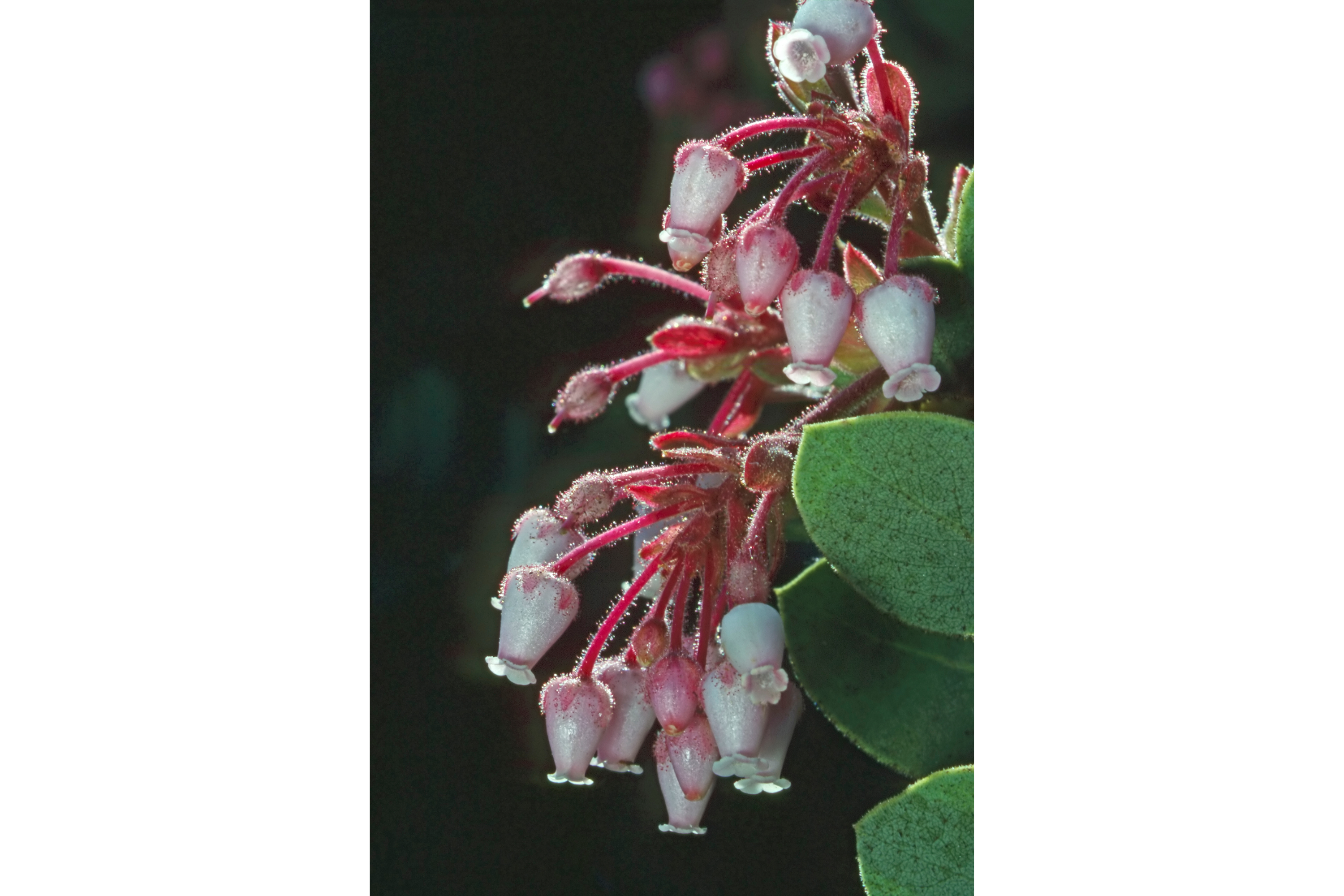Pointleaf manzanita
(Arctostaphylos pungens)

Description
Arctostaphylos pungens, with the common name pointleaf manzanita, is a species of manzanita. It is native to the Southwestern United States and to northern and central Mexico, where it grows in chaparral and woodland habitats, and on desert ridges. Arctostaphylos pungens can be seen growing at Tent Rocks National Monument in New Mexico at an elevation of about 6000 feet. Arctostaphylos pungens is an erect, spreading, evergreen shrub growing to heights between one and three meters. It has smooth red bark. Its smaller twigs and new leaves are lightly woolly. Mature leaves are leathery, shiny and green, oval to widely lance-shaped, and up to 4 centimeters long. The inflorescence is a spherical cluster of urn-shaped manzanita flowers. The fruit is a drupe 5 to 8 millimeters wide. It is a food source for many kinds of wildlife, and it is harvested by people and made into jam in many parts of Mexico. This shrub thrives in dry, shallow, acidic soils heavy with gravel and sand, and forms relationships with mycorrhizae to obtain extra nutrients and water. The seeds require scarification by wildfire before they are able to germinate. Arctostaphylos is a genus of plants comprising the manzanitas and bearberries. They are shrubs or small trees. There are about 60 species, of Arctostaphylos, ranging from ground-hugging arctic, coastal, and mountain species to small trees up to 6 m tall. Most are evergreen (one species deciduous), with small oval leaves 1–7 cm long, arranged spirally on the stems. The flowers are bell-shaped, white or pale pink, and borne in small clusters of 2–20 together; flowering is in the spring. The fruit are small berries, ripening in the summer or autumn. The berries of some species are edible. Arctostaphylos species are used as food plants by the larvae of some Lepidoptera species including Coleophora arctostaphyli (which feeds exclusively on A. uva-ursi) and Coleophora glaucella. Manzanitas, the bulk of Arctostaphylos species, are present in the chaparral biome of western North America, where they occur from southern British Columbia in Canada, Washington to California and New Mexico in the United States, and throughout much of northern and central Mexico. Three species, the bearberries, A. alpina (alpine bearberry), A. rubra (red bearberry) and A. uva-ursi (common bearberry), have adapted to arctic and subarctic climates, and have a circumpolar distribution in northern North America, Asia and Europe.
Taxonomic tree:







